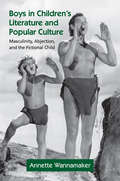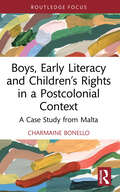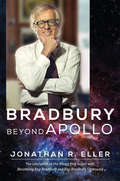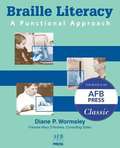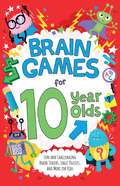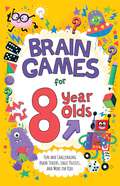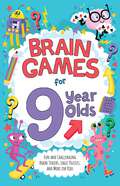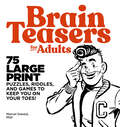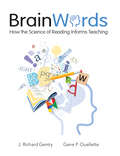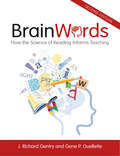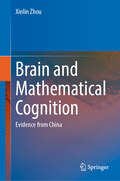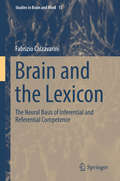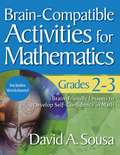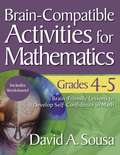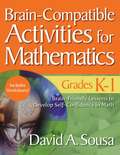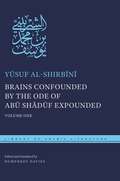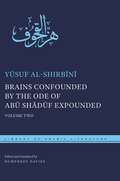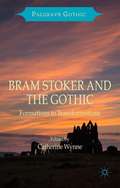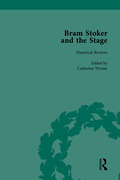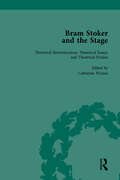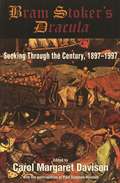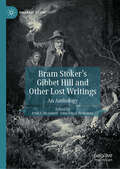- Table View
- List View
Boys and Girls in No Man's Land
by Susan FisherBoys and Girls in No Man's Land examines how the First World War entered the lives and imaginations of Canadian children. Drawing on educational materials, textbooks, adventure tales, plays, and Sunday-school papers, this study explores the role of children in the nation's war effort.Susan R. Fisher also considers how the representation of the war has changed in Canadian children's literature. During the war, the conflict was invariably presented as noble and thrilling, but recent Canadian children's books paint a very different picture. What once was regarded a morally uplifting struggle, rich in lessons of service and sacrifice, is now presented as pointless slaughter. This shift in tone and content reveals profound changes in Canadian attitudes not only towards the First World War but also towards patriotism, duty, and the shaping of the moral citizen.
Boys in Children's Literature and Popular Culture: Masculinity, Abjection, and the Fictional Child (Children's Literature and Culture)
by Annette WannamakerBoys in Children’s Literature and Popular Culture proposes new theoretical frameworks for understanding the contradictory ways masculinity is represented in popular texts consumed by boys in the United States. The popular texts boys like are often ignored by educators and scholars, or are simply dismissed as garbage that boys should be discouraged from enjoying. However, examining and making visible the ways masculinity functions in these texts is vital to understanding the broad array of works that make up children’s culture and form dominant versions of masculinity. Such popular texts as Harry Potter, Captain Underpants, and Japanese manga and anime often perform rituals of subject formation in overtly grotesque ways that repulse adult readers and attract boys. They often use depictions of the abject – threats to bodily borders – to blur the distinctions between what is outside the body and what is inside, between what is "I" and what is "not I." Because of their reliance on depictions of the abject, those popular texts that most vigorously perform exaggerated versions of masculinity also create opportunities to make dominant masculinity visible as a social construct.
Boys, Early Literacy and Children’s Rights in a Postcolonial Context: A Case Study from Malta (Routledge Research in Literacy Education)
by Charmaine BonelloThis book explores boys’ underachievement in literacy in early years education in Malta, using the dual lens of children’s rights and postcolonial theory. The author confronts issues in literacy attainment, early literacy learning and transitions to formal schooling with a case study from Malta. The book includes the voices of young boys who experience formal education from the age of five and adds a fresh perspective to existing literature in this area. Drawing on empirical research, the book traces the impact of foundational ideas of gender and early childhood, and makes practical recommendations to help young children experience socially just literacy education. This timely text will be highly relevant for researchers, educators and policymakers in the fields of literacy education, early childhood education, postcolonial education and children’s rights.
Bradbury Beyond Apollo
by Jonathan R. EllerCelebrated storyteller, cultural commentator, friend of astronauts, prophet of the Space Age—by the end of the 1960s, Ray Bradbury had attained a level of fame and success rarely achieved by authors, let alone authors of science fiction and fantasy. He had also embarked on a phase of his career that found him exploring new creative outlets while reinterpreting his classic tales for generations of new fans. Drawing on numerous interviews with Bradbury and privileged access to personal papers and private collections, Jonathan R. Eller examines the often-overlooked second half of Bradbury's working life. As Bradbury's dreams took him into a wider range of nonfiction writing and public lectures, the diminishing time that remained for creative pursuits went toward Hollywood productions like the award-winning series Ray Bradbury Theater. Bradbury developed the Spaceship Earth narration at Disney's EPCOT Center; appeared everywhere from public television to NASA events to comic conventions; published poetry; and mined past triumphs for stage productions that enjoyed mixed success. Distracted from storytelling as he became more famous, Bradbury nonetheless published innovative experiments in autobiography masked as detective novels, the well-received fantasy The Halloween Tree and the masterful time travel story "The Toynbee Convector." Yet his embrace of celebrity was often at odds with his passion for writing, and the resulting tension continuously pulled at his sense of self. The revelatory conclusion to the acclaimed three-part biography, Bradbury Beyond Apollo tells the story of an inexhaustible creative force seeking new frontiers.
Braided Lives: An Anthology of Multicultural American Writing
by Minnesota Humanities CommissionBraided Lives amplifies over forty different voices, bringing their distinctive sounds and stories to high school readers.
Braille Literacy Curriculum
by Diane P. Wormsley" ... supports the goals of the National Agenda, emphasizes outcomes, and presents strategies for incorporating Braille into the total curriculum." Organized around outcomes in three areas: Emergent Literacy, Basic Literacy, Functional Literacy. Presented by grade cluster: Beginning (K-3), Intermediate (4-7), Advanced (8-12).
Braille Literacy: A Functional Approach
by Diane P. WormsleyWormsley (program director, Professional Preparation Program in Education of Children with Visual and Multiple Disabilities, Pennsylvania College of Optometry) describes an approach to braille reading and writing instruction based on students' individual interests, needs, and goals. She offers general guidelines for a functional approach to braille literacy, then offers case studies of how the program can be modified for at-risk learners. The approach works with children and adults learning braille for the first time. B&w photos of instructional materials are included. Annotation ©2004 Book News, Inc., Portland, OR (booknews.com)
Brain Games for 10 Year Olds: Fun and Challenging Brain Teasers, Logic Puzzles, and More for Kids
by Gareth MooreStrengthen your fifth grader's logic skills with this unique collection of over 100 engaging and educational illustrated problems!Whether you&’re a teacher or parent, finding the perfect summer bridge book to build your child's resilience and improve their mindset has never been easier! Created especially for 10-year-old kids, Brain Games for 10 Year Olds is packed to the brim with a variety of captivating activities and brain-teasers, including: Sudoku puzzles Mazes Picture codes And so much more! Written by an internationally bestselling puzzle author, Brain Games for 10 Year Olds is the fantastic mix of zany entertainment and mind-bending games to keep your child engaged and delighted as they challenge their minds and learn new skills.
Brain Games for 8 Year Olds: Fun and Challenging Brain Teasers, Logic Puzzles, and More for Kids
by Gareth MooreHelp your eight-year-old build resilience, improve their mindset, and broaden their minds with this exciting collection of over 100 head-scratching puzzles!Whether you&’re a teacher or parent, finding new and exciting ways to stimulate your child&’s mind over the summer has never been easier! Specifically designed for eight-year-old children, Brain Games for 8 Year Olds is packed to the brim with a variety of captivating activities and brain-teasers, including: Sudoku puzzles Mazes Picture codes And so much more! Written by an internationally bestselling puzzle author, Brain Games for 8 Year Olds is the perfect mix of zany entertainment and mind-bending games to keep your child engaged and delighted as they learn and sharpen new skills.
Brain Games for 9 Year Olds: Fun and Challenging Brain Teasers, Logic Puzzles, and More for Kids
by Gareth MooreDiscover the perfect summer bridge book containing over 100 engaging and educational problems to help your fourth grader strengthen their critical thinking and toughen their minds.Whether you&’re a teacher or parent, finding new and exciting ways to stimulate your child&’s mind has never been easier! Designed especially for nine-year-old children, Brain Games for 9 Year Olds is packed with a variety of captivating activities and brain-teasers, including: Sudoku puzzles Mazes Picture codes And so much more! Written by an internationally bestselling puzzle author, Brain Games for 9 Year Olds is the perfect mix of zany entertainment and mind-bending games to keep your child engaged and delighted as they sharpen their logic and learn new skills.
Brain Teasers for Adults: 75 Large Print Puzzles, Riddles, and Games to Keep You on Your Toes
by Marcel DanesiGive your brain a test. Give your eyes a rest. Looking for a way to keep your brain on its toes? Well, there is nothing more mentally stimulating or fun than good old-fashioned brain teasers. And since everyday life doesn't throw perplexing riddles at us very often, Brain Teasers for Adults offers a variety of tricky, yet "doable" puzzles to help build your logic, math, and wordplay. The unique skills derived from solving brain teasers helps put you in a better position to resolve important problems from work to daily life. Go in order of difficulty or skip around—the decision is yours! Solve all 75 brain teasers and stand tall, knowing you have outsmarted the puzzle-maker himself. Inside Brain Teasers for Adults, you'll find: Choose your difficulty—Moving from simple Duck Soup Puzzles to Head Scratchers, engage your brain on different levels, with each riddle labeled by difficulty. 5 Categories—Filled with brain teasers categories such as Wordplay, Logic, Card puzzles, and more are meant to stimulate your thoughts in different ways. Clues to use—An optional clues section has been provided for each question in case a little extra help is needed! Time to discover how fun and rewarding puzzle-solving can be with Brain Teasers for Adults!
Brain Words: How the Science of Reading Informs Teaching
by J. Richard Gentry Gene OuelletteThe past two decades have brought giant leaps in our understanding of how the brain works. But these discoveries-;and all their exciting implications-;have yet to make their way into most classrooms.In Brain Words: How the Science of Reading Informs Teaching , authors J. Richard Gentry and Gene Ouellette, bring their original, research-based framework of brain words dictionaries in the brain where students store and automatically access sounds, spellings, and meaning. This book aims to fill the gap between the science of reading and classroom instruction by providing up-to-date knowledge about reading and neurological circuitry, including evidence that spelling is at the core of the reading brain.Brain Words will show how children's brains develop as they become readers and discover ways you can take concrete steps to promote this critical developmental passage, including: Incorporating tools to recognize what works, what doesn't, and whyPractical classroom activities for daily teaching and student assessmentInsights about what brain research tells us about whole language and phonics-first movementsDeepened understanding of dyslexia through the enhanced lens of brain scienceWith the insights and strategies of Brain Words , you can meet your students where they are and ensure they gain confidence as readers, spellers, and writers.
Brain Words: How the Science of Reading Informs Teaching
by J. Richard Gentry Gene P. Ouellette"Gentry and Ouellette are cannonballing into the reading research pool, they're making waves, and these waves are moving the field of reading forward."—From the foreword by Mark Weakland, Super Spellers"In this second edition, the authors have written a practical and fascinating resource that helps connect the theory and research of the neurological reading circuitry to classroom practice."—Molly Ness, teacher educator, author, consultantA lot has changed since the original publication of Brain Words. The first edition was very much a call for change, and change has indeed happened! While the science of reading has made real and substantive change within education, there unfortunately remain too many misunderstandings and misinterpretations of what the science of reading is, and stubborn resistance to all it has to offer. Now more than ever it is vital that we work towards an understanding of the science of reading and what it has to say about teaching our students how to read.Written for beginning or seasoned teachers, homeschoolers, teacher educators, as well as parents who want to fully engage in their child’s literacy development, this updated and highly readable new edition presents brain science, reading research, and theory in ways that can be understood and directly applied in teaching, ultimately leading to efficacious science of reading based literacy instruction.Gentry and Ouellette show how an understanding of the science of reading can shape teaching to help make all students literate. Building on their science of reading based framework of “brain words”—dictionaries in the brain where students store and access word spelling, pronunciation, and meaning—the authors offer a wealth of information to transform your thinking and practice. They offer: an updated review of models of reading, developmental theory, and brain research that help explain the reading brain a new exploration of how oral language provides the foundation for learning to read and write, and how elements of oral language directly contribute to literacy learning throughout the school years an evolving critique of classroom practices that aren't as effective as once believed explicit guidance on how spelling can be used to teach the critical skill of word reading a deepened understanding of dyslexia through the lens of the science of reading With the insights and strategies in Brain Words, you can meet your students where they are and ensure that more of them read well, think well, and write well.
Brain and Mathematical Cognition: Evidence from China
by Xinlin ZhouThis book intends to present a series of insights coming from in-depth investigation of brain and mathematical cognition in Chinese population. Specifically, the book introduces research on the associations among number sense, visual form perception and mathematical fluency; symbolic and non-symbolic mental number line; and the role of spatial modeling and logical inference in mathematical problem solving. The book summarizes author's previous studies on the involvement of semantic network other than visuospatial network in mathematical cognition. The three-component mathematical model that comes out of more than 10 years of research on mathematical cognition is introduced. The book presents the effect of learning experience on arithmetic-related brain system. Chinese abacus that can be used to eradicate developmental dyscalculia in classroom is briefly discussed. Special attention in this book is paid to mathematical anxiety and mathematical learning disorders in Chinese schoolchildren. Finally, gender differences in mathematical cognition are also reviewed.
Brain and the Lexicon: The Neural Basis of Inferential and Referential Competence (Studies in Brain and Mind #15)
by Fabrizio CalzavariniThis monograph offers a novel, neurocognitive theory concerning words and language. It explores the distinction between inferential and referential semantic competence. The former accounts for the relationship of words among themselves, the latter for the relationship of words to the world. The author discusses this distinction at the level of the human brain on both theoretical and neuroscientific grounds. In addition, this investigation considers the relation between the inf/ref neurocognitive theory and other accounts of semantic cognition proposed in the field of neurosemantics, as well as some potential implications of the theory for clinical neuroscience and the philosophy of semantics. Overall, the book offers an important contribution to the debate about lexical semantic competence. It combines a strong philosophical and linguistic background with a comprehensive and critical analysis of neurosemantic literature. Topics discussed lie at the intersection of philosophical semantics, linguistics, neurolinguistics, cognitive science, artificial intelligence, cognitive neuroscience, and clinical psychology. Due to its interdisciplinary orientation, coverage is rich in introductory remarks and not overly technical, therefore it is accessible to non-experts as well.
Brain-Compatible Activities for Mathematics, Grades 2-3
by David A. SousaDemonstrating instructional principles discussed in David A. Sousa’s How the Brain Learns Mathematics, this resource provides brain-friendly, ready-to-use mathematics lessons for Grades 2-3. Teachers will find step-by-step guidance and all the necessary reproducible materials for mathematics instruction that involves group work, reflection, movement, and visualization. Through activities such as Jumping Jelly Beans, Math Hockey, and Treasure Hunt, young learners will enjoy developing skills connected with number patterns and place value, multi-digit addition and subtraction, multiplication and division, fractions, measurement, geometry, and more.Aligned with NCTM standards and focal points, the instructional strategies:Enhance motivation and content retentionAddress individual intelligencesPromote writing as an important learning toolUse concrete models to make concepts meaningfulConnect mathematical ideas to the real worldTeach creative problem solvingDeepen and revitalize instruction using Sousa’s proven brain-compatible approach for helping every student develop self-confidence in mathematics!
Brain-Compatible Activities for Mathematics, Grades 4-5
by David A. SousaBrain-Compatible Activities for Mathematics, Grades 4-5 provides brain-friendly, ready-to-use mathematics lessons for the classroom. Teachers will find step-by-step guidance and all the necessary reproducible materials for mathematics instruction that involves group work, reflection, movement, and visualization. Through activities such as Scuba Division, Party Planners, Sunken Treasure, and Parachute Drop, intermediate learners will enjoy developing skills connected with multiplication and division, fractions and decimals, geometry and measurement, algebra, data analysis, and more.Aligned with NCTM standards and focal points, the instructional strategies enhance motivation and content retention, while addressing individual intelligences. Also included is instruction to:Promote writing as an important learning toolUse concrete models to make concepts meaningfulConnect mathematical ideas to the real worldIncorporate graphic organizers to help students organize their thinkingDeepen and revitalize instruction using Sousa’s proven brain-compatible approach for helping every student develop self-confidence in mathematics!
Brain-Compatible Activities for Mathematics, Grades K-1
by David A. SousaUsing principals from Dr. David A. Sousa’s How the Brain Learns Mathematics, this user-friendly resource provides easy, ready-to-use mathematics lessons for Kindergarten and first grade classrooms. Teachers will find step-by-step guidance and all the necessary reproducible materials for mathematics instruction that involves partners, group work, and class movement. Through activities such as Number Jingle and Math Detective, young learners will enjoy developing skills connected with whole numbers, addition and subtraction, geometrical shapes, measurement, number patterns, and more.Aligned with NCTM standards and focal points, the resources in this book aim to enhance students’ motivation and content retention. Further, the principals in this book:Address individual intelligencesUse concrete models to make concepts meaningfulConnect mathematical ideas to the real worldIncorporate graphic organizers to help students organize their thinkingTeach creative problem solvingDeepen and revitalize instruction using Sousa’s proven brain-compatible approach for helping every child develop self-confidence in mathematics!
Brains Confounded by the Ode of Abū Shādūf Expounded: Volume One (Library of Arabic Literature #Volume One)
by Yūsuf al-ShirbīnīUnique in pre-twentieth-century Arabic literature for taking the countryside as its central theme, Yūsuf al-Shirbīnī’s Brains Confounded combines a mordant satire on seventeenth-century Egyptian rural society with a hilarious parody of the verse-and-commentary genre so beloved by scholars of his day.In Volume One, al-Shirbīnī describes the three rural “types”—peasant cultivator, village man-of-religion and rural dervish—offering numerous anecdotes testifying to the ignorance, dirtiness, illiteracy, lack of proper religious understanding, and criminality of each. He follows it in Volume Two with a 47-line poem supposedly written by a peasant named Abū Shādūf, who charts the rise and fall of his fortunes and bewails, above all, the lack of access to delicious foods to which his poverty has condemned him. Wielding the scholarly tools of elite literature, al-Shirbīnī responds to the poem with derision and ridicule, dotting his satire of the ignorant rustic with numerous digressions into love, food, and flatulence.Witty, bawdy, and vicious, Brains Confounded belongs to an unrecognized genre from an understudied period in Egypt’s Ottoman history, and is a work of outstanding importance for the study of pre-modern colloquial Egyptian Arabic, pitting the “coarse” rural masses against the “refined” and urbane in a contest for cultural and religious primacy, with a heavy emphasis on the writing of verse as a yardstick of social acceptability. A bilingual Arabic-English edition.
Brains Confounded by the Ode of Abū Shādūf Expounded: Volume Two (Library of Arabic Literature #Volume Two)
by Yūsuf al-ShirbīnīUnique in pre-twentieth-century Arabic literature for taking the countryside as its central theme, Yūsuf al-Shirbīnī’s Brains Confounded combines a mordant satire on seventeenth-century Egyptian rural society with a hilarious parody of the verse-and-commentary genre so beloved by scholars of his day.In Volume One, al-Shirbīnī describes the three rural “types”—peasant cultivator, village man-of-religion and rural dervish—offering numerous anecdotes testifying to the ignorance, dirtiness, illiteracy, lack of proper religious understanding, and criminality of each. He follows it in Volume Two with a 47-line poem supposedly written by a peasant named Abū Shādūf, who charts the rise and fall of his fortunes and bewails, above all, the lack of access to delicious foods to which his poverty has condemned him. Wielding the scholarly tools of elite literature, al-Shirbīnī responds to the poem with derision and ridicule, dotting his satire of the ignorant rustic with numerous digressions into love, food, and flatulence.Witty, bawdy, and vicious, Brains Confounded belongs to an unrecognized genre from an understudied period in Egypt’s Ottoman history, and is a work of outstanding importance for the study of pre-modern colloquial Egyptian Arabic, pitting the “coarse” rural masses against the “refined” and urbane in a contest for cultural and religious primacy, with a heavy emphasis on the writing of verse as a yardstick of social acceptability. A bilingual Arabic-English edition.
Bram Stoker and the Gothic: Formations To Transformations (Palgrave Gothic)
by Catherine Wynne'My revenge is just begun! I spread it over centuries, and time is on my side,' warns Dracula. This statement is descriptive of the Gothic genre. Like the Count, the Gothic encompasses and has manifested itself in many forms. Bram Stoker and the Gothic demonstrates how Dracula marks a key moment in the transformation of the Gothic. Harking back to early Gothic's preoccupation with the supernatural, decayed aristocracy and incarceration in gloomy castles, the novel speaks to its own time, but has also transformed the genre, a revitalization that continues to sustain the Gothic today. This collection explores the formations of the Gothic, the relationship between Stoker's work and some of his Gothic predecessors, such as Poe and Wollstonecraft, presents new readings of Stoker's fiction and probes the influences of his cultural circle, before concluding by examining aspects of Gothic transformation from Daphne du Maurier to Stoker's own 'reincarnation' in fiction and biography. Bram Stoker and the Gothic testifies to Stoker's centrality to the Gothic genre. Like Dracula, Stoker's 'revenge' shows no sign of abating.
Bram Stoker and the Stage, Volume 1: Reviews, Reminiscences, Essays and Fiction
by Catherine WynneThough best known as the author of Dracula (1897) Bram Stoker had a successful career in the theatre. This collection brings together all Stoker's theatrical reviews from Dublin's Evening Mail, his published essays and interviews on the theatre, selections from Reminiscences of Henry Irving (1906) and a fictional work on the theatre.
Bram Stoker and the Stage, Volume 2: Reviews, Reminiscences, Essays and Fiction
by Catherine WynneThough best known as the author of Dracula (1897) Bram Stoker had a successful career in the theatre. This collection brings together all Stoker's theatrical reviews from Dublin's Evening Mail, his published essays and interviews on the theatre, selections from Reminiscences of Henry Irving (1906) and a fictional work on the theatre.
Bram Stoker's Dracula: Sucking Through the Century, 1897-1997
by Carol Margaret Davison Paul Simpson-HousleyWinner of the 1997 International Association of the Fantastic in the Arts Best Non-fiction Book In 1897, Archibald Constable & Company published a novel by the unheralded Bram Stoker. That novel, Dracula, has gone on to become perhaps the most influential novel of all time. To commemorate the centennial of that great novel, Carol Margaret Davison has brought together this collection of essays by some of the world’s leading scholars. The essays analyze Stoker’s original novel and celebrate its legacy in popular culture. The continuing presence of Dracula and vampire fiction and films provides proof that, as Davison writes, Dracula is "alive and sucking." "Dracula is a Gothic mandala, a vast design in which multiple reflections of the elements of the genre are configured in elegant sets of symmetries. It is also a sort of lens, bringing focus and compression to diverse Gothic motifs, including not only vampirism but madness, the night, spoiled innocence, disorder in nature, sacrilege, cannibalism, necrophilia, psychic projection, the succubus, the incubus, the ruin, and the tomb. Gathering up and unifying all that came before it, and casting its great shadow over all that came and continues to come after, its influence on twentieth-century Gothic fiction and film is unique and irresistible." from the Preface by Patrick McGrath
Bram Stoker's Gibbet Hill and Other Lost Writings: An Anthology (Palgrave Gothic)
by John Edgar Browning Paul S. McAlduffAs Carol A. Senf has noted of some of Bram Stoker&’s less prominent fictions in Science and Social Science in Bram Stoker&’s Fiction (2002), they often occupy an elusive place, &“a realm that is not precisely Gothic but that is somehow beyond the scientific and rational world of the late nineteenth and early twentieth centuries.&” The present anthology demonstrates how even Stoker&’s nonfictive works, including his jokes, often find themselves at home in the elusive realm of which Senf is here speaking. After more than six years of archival inquiry, the editors present here nineteen previously unknown or relatively unglimpsed published letters, works of short fiction, and journalistic writing by Stoker (1847-1912), including &“Gibbet Hill&” (1890), a Gothic short story the editors discovered in 2016. Additionally, they present fifty-five other unknown period writings by or about Stoker, including interviews, public addresses, speeches, and testimonies. The works in this anthology, together with the extensive research offered in the introduction, prefatory note, and annotations, not only highlight the intertextuality between Dracula and other of Stoker&’s works, but support the conclusion that Stoker&’s periodical writings indeed denote a much greater force in his literary repertoire than previously accepted. Not surprisingly, many of the works in this anthology exhibit the same curious sprinkling of characteristically delicate Gothicisms and &“other knowledges&” for which Stoker has become known outside of his ubiquitous vampire novel.

